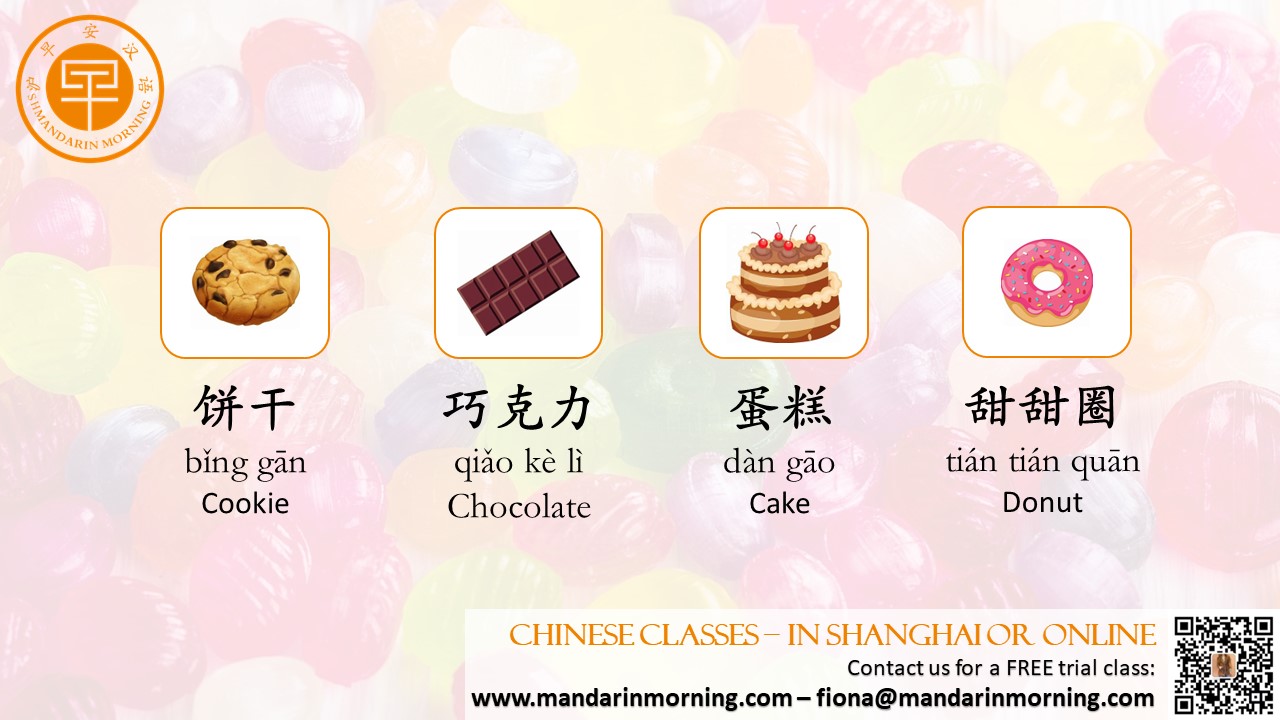| Are you a dessert or a starter person? Do you have a sweet tooth? If your day isn’t complete without a bite of something sweet, you’re in for a treat! From the crispy crunch of cookies to the soft, heavenly bite of a mousse, we’re unveiling 10 essential Chinese words for every dessert lover.  Cookie 饼干 Ever wondered if there’s a difference between cookies and biscuits? In America, people usually say “cookie,” while in the UK, they prefer “biscuit.” The good news is, in Chinese, both cookies and biscuits are called by the same delicious name: 饼干 (bǐng gān). 饼 (bǐng) means “cookie” or any round, flat baked snack. And 干 (gān) means “dry.” So, put together, 饼干 is the word for a dry, flat baked snack. Candy 糖果 In Chinese, the word for “candy” is 糖果 (táng guǒ). 糖 (táng) means “sugar” or directly “candy,” while 果 (guǒ) translates to ‘nut’ in this context. You might wonder, why “sugar nut”? Back in ancient China, the first sweets were actually nuts coated in honey. Since sugar as we know it was a later invention, early Chinese confectioners used honey or malt sugar to sweeten nuts or fruits, crafting the earliest candies. Today, 糖果 refers to a narrower range of sweets, primarily focusing on those that are sugar-based and often hard or chewy in texture, such as jelly beans, lollipops, and toffees. One famous Chinese candy is the “white rabbit candy,” aka 大白兔 (dà bái tù), which literally means “big white rabbit.” It’s chewy, shaped like a tootsie roll, and comes in 15 flavors. Chocolate 巧克力 Did you know that some Chinese words come from other languages? 巧克力 (qiǎo kè lì), meaning “chocolate,” is one of them. These borrowed words are known as “loanwords.” Some people might consider chocolates as a type of candy. But in Chinese, chocolate and candy are seen as completely different treats. Yet, both treats have one thing in common: they’re mood boosters! Chocolate, in particular, is known for releasing endorphins, which are chemicals that bring us joy, into the brain. So, whether it’s a bar of chocolate or a few candies, each has its own way of lifting people’s moods. Cake 蛋糕 Are you craving a slice of cake now? In Chinese, “cake” is called 蛋糕 (dàn gāo). 蛋 means “egg,” and 糕 means “cake,” so together, they mean “egg cake.” This fits well because eggs are essential for making cakes, especially those light, fluffy ones. In many places, people buy birthday cakes (生日蛋糕; shēngrì dàngāo) from supermarkets. However, in China, it’s more common to get them from local bakeries or patisseries. That’s because they’re usually fresher and tastier. Donut 甜甜圈 If now you’re in the mood for something sweet but with a fluffy texture, then donuts are the perfect treat for that craving. In Chinese, “donut” is called 甜甜圈 (tián tián quān). The word 甜 means “sweet,” and 圈 means “ring” or “circle,” so together, 甜甜圈 literally means “sweet sweet ring.” Donuts come in various flavors and toppings, from simple sugar dustings to elaborate fillings and icings. Whether you’re enjoying a classic glazed donut or experimenting with more unique flavors, the 甜甜圈 will satisfy your sweet tooth with its delightful combination of sweetness and fluffy texture. |